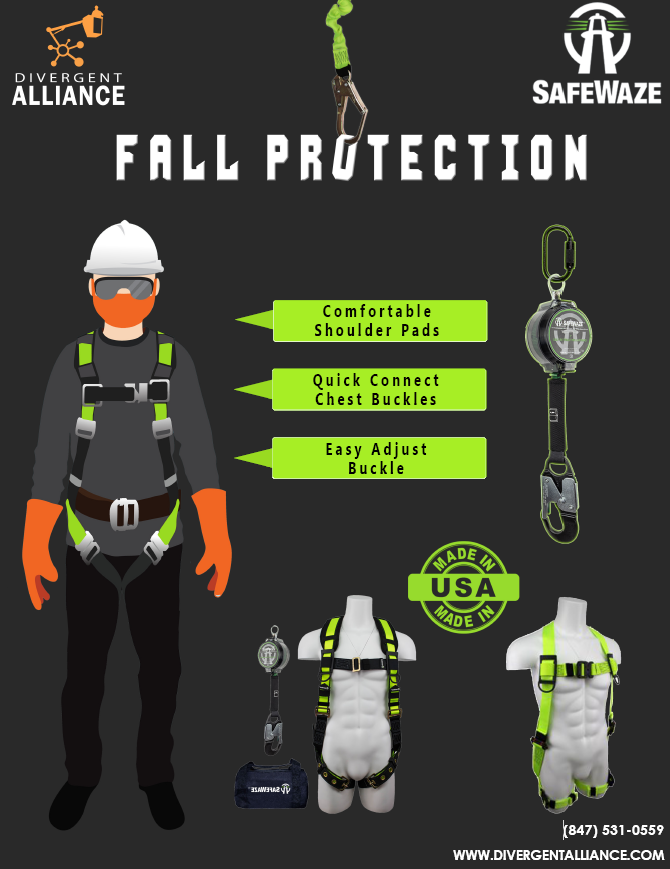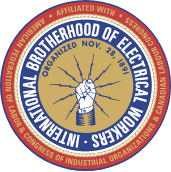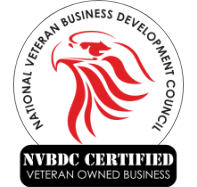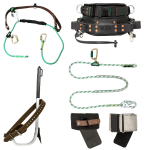The work of a lineman is dangerous because they are often working on high voltage electrical systems high up in the powerlines. It is crucial for linemen to always be following the proper safety protocols and using the right equipment to protect themselves, including fall protection equipment. A lineman may find themselves regularly climbing utility poles between 40 and 100 feet. A fall from these heights can be extremely dangerous and even deadly.
In 2014, OSHA passed new fall protection regulations that require all utility workers to use fall protection when they climb above a height of 4 feet. These regulations were put in place to protect all utility workers from falls in every workplace, no matter what task they are performing. Under these regulations, employers are responsible for ensuring their employees use fall protection and providing the proper personal fall protection equipment.
In this guide, we will discuss what fall protection is and why it is important, the history of fall protection, and lineman fall protection equipment. At Divergent Alliance, we supply personal fall protection equipment to help businesses across the Unites States and in the Chicago area keep their employees safe. We carry lineman fall protection equipment from top suppliers including Buckingham Manufacturing and SafeWaze.
What is Fall Protection?
Fall protection is a general term that refers to the actions and equipment that help protect linemen and utility workers from falls. Fall protection equipment for linemen generally includes the following:

- Full body harnesses or belts with integrated harnesses: Full body harnesses include straps over the thighs, waist, pelvis, chest, and shoulders to evenly distribute the force of a fall arrest.
- Lifelines: Lifelines are flexible lines that connect the body harness to the anchor. Self-retracting lifelines are deceleration devices that allow for controlled ascension and descension and they lock automatically in the event of a fall.
- Lanyards: Lanyards are a flexible type of rope or strap that connect the harness to a lifeline, anchor, or deceleration device.
- Connectors: Connectors are used to connect the various parts of a fall protection system together, including lanyards and lifelines to body harnesses and anchors. Carabiners are common connectors.
- Anchors: Anchors are points of attachment that secure lifelines, deceleration devices, and lanyards.
- Wood Pole Climbing Fall Protection | Pole straps: Pole straps wrap around a pole and attach to the waste of a worker to keep them near the pole. These are used mostly for working on utility poles.
Under the latest OSHA regulations, full body harnesses, or at least belts integrated into a harness, are the acceptable options. Body belts are no longer permitted to be used for fall arrest as these belts only provide fall arrest at the waist. In a fall, arresting the fall at the waist can cause additional bodily harm to the lineman. There is also a risk of falling out of the body belt.
There are three main types of acceptable fall protection systems that can be used according to OSHA’s regulations: personal fall arrest, work-positioning, and fall restraint. It is the responsibility of a company to determine which fall protection system to use based on the task and work environment. Employers must understand the strengths and weaknesses of each system and ensure that their employees are using the proper fall protection system when performing the job.
The following is a description of each type of system:
- Personal fall arrest system: This system works by arresting a worker in a fall from a walking-working surface. With this system, workers must wear a full body harness that is connected to an anchor, usually via a shock-absorbing lanyard. A combination of body harnesses, lanyards, lifelines, and deceleration devices can be used for a proper personal fall arrest system. This system should also be used by workers that are working in a bucket or basket.
- Work-positioning system: Work-positioning systems are used to keep a worker safely suspended when working on an elevated vertical surface such as a wall or utility pole while keeping their hands free. This system consists of a body harness and pole strap to keep them close to the pole, as well as a lifeline to help keep the worker elevated. Self-retracting lifelines are deceleration devices that allow workers to ascend and descend at a controlled rate and they lock up automatically when a fall occurs to arrest the fall.
- Fall restraint systems: This system is used in lower risk situations to protect workers who are working on an elevated surface such as a roof. Fall restraint systems consist of harnesses and lanyards that prevent workers from walking into a hazardous area where a fall can occur. If an elevated surface is not as stable as a surface like the roof of a building, a fall arrest system should be used instead.
Give us a call at (847) 531-0559 or submit a contact form for pricing. We offer fast shipping across the United Sates.
History of Lineman Fall Protection
We have come a long way when it comes to fall protection and regulations requiring fall protection. As recently as the first half of the 20th century, there were little to no regulations concerning fall protection. This is most evident in the famous photograph of workers eating lunch while sitting in a row on a girder high in the air during the construction of the Empire State Building with no safety devices in use.
There was virtually no regulation for fall protection until the establishment of the occupational Safety and Health Administration (OSHA) in 1971. Before this, it was up to individual workers to take measures for their safety as employers were not held accountable for the working conditions of their employees. Workers began using various forms of fall protection in the 1920s and it wasn’t until OSHA was created that industry safety standards appeared. Since OSHA’s inception, fall protection standards have continued to evolve to protect the safety of workers like linemen who work at high altitudes.
The first fall protection equipment that was used were body belts that were adapted from rock climbers to be used in elevated work environments. By the 1970s, workers were securing their body belts to two safety lanyards and using a tie-off system to ensure fall arrest, even if one lanyard broke. The problem with the body belt is that a worker had to fall horizontally to safely arrest a fall. If they did not fall in this way, they could slip out of the body belt.
In the 1940s, some workers started using safety harnesses based on those used by paratroopers in World War II. The safety harnesses provided better fall protection than the body belts and they became the standard by the 1990s. Full-body harnesses were bulky at first, but the design improved over the years to make them more lightweight, comfortable, and adjustable. In 2011, safety harnesses were redesigned by ergonomics experts, mechanical engineers, and industrial engineers to make them more comfortable.
Fall Protection Regulations
When OSHA was established in 1971, addressing the issue of fall protection was one of their first priorities. OSHA collected data that helped them develop safety regulations and employers began to take responsibility for providing fall protection equipment for their employees. In 1994, the Subpart M Fall Protection Standard required employers to provide their employees with OSHA compliant fall protection systems when working on surfaces 4-6 feet or higher off the ground.
The regulations passed by OSHA in 2014 make a couple of changes to the 1994 regulations. The first major change is that every lineman or worker must use fall protection when working at heights of 4 feet or higher. The old regulations stated that fall protection equipment was not required unless workers were higher than 6 feet when working on poles and similar structures. The new regulations make this height 4 feet no matter what the surface.
The other major change is to the fall protection exceptions. Under previous regulations, workers were able to use body belts under certain situations, such as accessing a crossarm or climbing steel poles. The new regulations require body harnesses to be worn at all times by linemen no matter their work surface. The only way there can be an exception to using fall protection equipment is if an employer can demonstrate that it is more dangerous for their workers to climb with fall protection equipment than without it. For this exception, employers must do a thorough evaluation of the workspace and present evidence for their finding.
Why are Fall Protection Regulations Important?
Even though pole climbing fall protection equipment can prevent injuries and save lives, there is a problem with workers failing to use fall protection. Falls from height are the top cause of workplace deaths in the construction industry and failure to use proper fall protection is the most frequent OSHA violation. The 2014 OSHA regulations were put into place to increase compliance among workers and help prevent injuries and workplace deaths.
While new regulations and additional fall protection training has helped increase compliance, non-compliance is still an issue. Whenever a lineman does not use fall protection, even at relatively low heights, they are putting themselves at risk for injury or worse. The main reasons cited for not using fall protection equipment are that the harnesses are heavy or uncomfortable, too hot, or in the way of doing the job. This has led to the development of ergonomic harnesses that are safer, more comfortable, and less bulky so they are not as hot or in the way.
With the latest OSHA regulations, increased training, and improved fall protection equipment, we hope that compliance within the industry increases so that all linemen are protected when they work.
Lineman Fall Protection Equipment from Divergent Alliance – Fast Shipping Across the U.S.
Under the latest OSHA regulations, it is the employers who are responsible for providing their employees with the proper fall protection equipment. Compliance with these regulations will help prevent serious injuries or death and avoid possible OSHA citations.
At Divergent Alliance, we provide OSHA compliant personal fall protection equipment and lineman tools for linemen and utility workers across the Unites States and in the Chicago area. We offer fall protection equipment that includes harnesses, connectors, anchors, lanyards, and lifelines from the top manufacturers of the industry including Buckingham Manufacturing and SafeWaze.
When you work with Divergent Alliance, you can trust that you are getting the best fall protection equipment available to protect your employees.
Give us a call at (847) 531-0559 or submit a contact form for pricing. We offer fast shipping across the United Sates.





